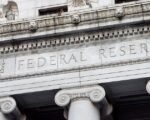The Bank of England is ramping up its stress tests for UK banks in 2025, focusing on traded risk exposure. Banks are expected to brace for severe market shocks and potential counterparty defaults, reflecting a more aggressive approach to safeguarding the financial system.
A New Wave of Stress Testing
Banks won’t just be running the usual numbers. The 2025 stress test introduces a tougher stance on traded risk — covering both trading book and banking book positions. This includes fair value through profit or loss (FVTPL) and fair value through other comprehensive income (FVOCI) assets.
For the first time since the altered 2021 tests, the scenario ties closely to global and regional macroeconomic forecasts. The Bank aims to simulate the real-world impact of market upheavals, ensuring banks face losses that mirror past financial crises — and potential future ones.

Liquidity and Counterparty Risks Take Center Stage
Market liquidity isn’t just a buzzword here — it’s critical. The Bank insists on risk factor shocks tailored to the liquidity of each position. Essentially, illiquid assets are stuck under stress for longer periods, amplifying potential losses.
Counterparty credit risk also gets a sharper focus. Banks must pinpoint vulnerable counterparties likely to default under the scenario. This brings counterparty defaults in line with broader macroeconomic shocks, ensuring losses stay realistic.
- Banks must identify and default particularly vulnerable counterparties.
- Loss projections must reflect liquidity constraints for each position.
- Hedge positions tied to excluded assets may still contribute to traded risk losses.
What’s In and What’s Out
Not everything falls under the 2025 traded risk umbrella. The Bank has drawn clear lines on what gets tested:
| Included Positions | Excluded Positions |
|---|---|
| Regulatory trading book positions | Banking book securitisations (Chapter 5) |
| FVOCI assets and hedges | Covered bonds |
| Fair value option (FVO) assets | Amortised cost loans (except counterparty defaults) |
| Underwriting positions and associated hedges | Hedges to amortised cost loans |
Exceptions include positions with prudential filters, which are omitted unless stated otherwise. The Bank’s approach ensures capital depletion reflects only the most material market shocks.
Capital Resources vs. Capital Requirements
It’s not just about losses. The Bank’s model digs into both capital resources — how much capital banks lose — and capital requirements, which could surge due to increased market volatility and counterparty risk.
For banks, this means double trouble: shrinking capital buffers and rising regulatory demands. The scenario doesn’t just gauge losses — it pressures banks to prove they can handle volatility spikes and counterparty collapses without tipping into crisis territory.








